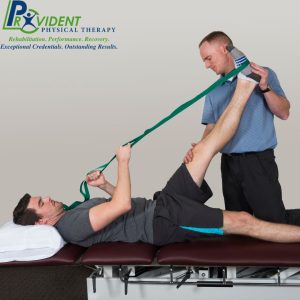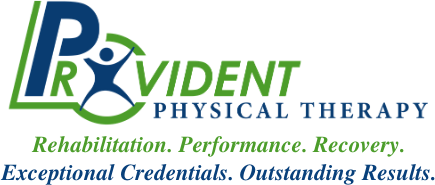The main focus of physical therapy is to help patients regain movement and function after an injury or illness. PTs use a variety of techniques to achieve this, including exercises, stretches, and massage. They may also use electrical stimulation or other forms of therapy to help reduce pain and improve range of motion. At Provident Physical Therapy in Medford, we’re happy to walk you through everything that comes with our therapeutic modalities.
What benefits come with Physical Therapy?
Patients who receive physical therapy can expect to see a number of benefits, including:
– Improved movement and function
– Decreased pain levels
– Increased range of motion
– Greater independence
What are some common conditions treated with Physical Therapy?
Physical therapy can be used to treat a wide variety of conditions, including:
– Arthritis
– Back pain
– Joint replacement surgery
– Sports injuries
– Stroke
– Neurological conditions such as Parkinson’s disease and multiple sclerosis.
What are the types of Physical Therapy Exercises?
PTs use a variety of exercises to help their patients regain movement and function. These exercises can be performed with or without equipment and can be tailored to each individual’s needs. Some common types of PT exercises include:
– Cardiovascular exercises to improve endurance and heart health
– Strength-training exercises to build muscle and improve joint stability
– Balance and coordination exercises to prevent falls
– Flexibility and stretching exercises to improve range of motion.
Understanding the Role of a Physical Therapist
A physical therapist (PT) is a highly trained healthcare professional who evaluates each patient’s condition by reviewing their medical history, assessing their mobility and strength, and identifying impairments. Physical therapists also work closely with other professionals in fields like occupational therapy and sports medicine to provide a holistic approach to care. They create treatment plans tailored to the patient’s specific needs and goals.
The physical therapist’s work may include:
- Manual therapy (hands-on techniques)
- Strength and flexibility exercises
- Electrical stimulation
- Therapeutic ultrasound
- Mobility training
- Pain management techniques
These interventions are often used in outpatient settings but may also apply in hospitals, rehabilitation centers, or even at home.
Focus of Physical Therapy: Goals and Benefits
The core focus of physical therapy is to improve mobility and physical function in patients suffering from various health issues. Common goals include:
- Improving range of motion
- Reducing pain
- Enhancing strength and endurance
- Increasing flexibility
- Restoring balance and coordination
- Helping patients regain independence in daily tasks
The benefits of physical therapy are vast. It can help manage a chronic condition, prevent future injuries, and even avoid surgery. Physical therapy may also aid in recovery from spinal cord injuries, strokes, or joint replacements. Additionally, patients with neurological disorders like Parkinson’s disease can benefit from physical therapy designed to preserve function and delay progression.
Specialty Areas of Physical Therapy
There are several specialty areas of physical therapy. Depending on a patient’s condition, they may work with a physical therapist who focuses on a specific field. These specialties include:
- Orthopedic physical therapy – treats injuries related to muscles, joints, and bones.
- Neurological physical therapy – focuses on disorders like strokes, Parkinson’s disease, and spinal cord injuries.
- Pediatric physical therapists work with children who have developmental, neuromuscular, or skeletal issues.
- Sports and fitness – helps athletes recover from injuries and improve performance.
- Occupational therapy – though distinct from PT, often overlaps in helping individuals with daily function.
These areas demonstrate how physical therapists specialize to meet the specific needs of each patient population.
Therapy Techniques and Tools
Physical therapy involves a combination of techniques and modalities. A treatment plan may include:
- Stretching to enhance flexibility
- Manual therapy to manipulate joints and soft tissue
- Electrical stimulation to reduce pain and improve muscle activation
- Balance and coordination drills
- Functional exercises tailored to real-life activities
These interventions are designed to improve mobility, reduce pain, and restore function. Hands-on techniques allow therapists to assess tissues in real-time and make manual adjustments when necessary.
The Importance of a Treatment Plan
Each patient’s therapy begins with a comprehensive evaluation. Based on this, the PT will develop a treatment plan that may include various therapy techniques. This plan is regularly updated as the patient progresses. Physical therapists also educate patients on self-care, posture, and home exercises to maximize success.
A typical treatment plan may include:
- Exercises to improve range of motion
- Modalities like electrical stimulation
- Manual therapy to address soft tissue restrictions
- Education about physical activity and proper body mechanics
The plan is always tailored to the patient’s condition, whether that’s a chronic condition, post-surgical recovery, or rehabilitation from injury.
Physical Therapy in Action
At Provident Physical Therapy, our physical therapists and physical therapist assistants use a combination of hands-on care, cutting-edge equipment, and evidence-based practice to address a wide range of health conditions. Whether you require physical therapy for rehabilitation after surgery or are looking for therapy to help manage a chronic condition, our team will create a customized approach just for you.
Our physical therapy programs focus on:
- Improving physical function and mobility
- Helping patients regain movement
- Reducing pain without the use of opioids
- Promoting safe physical activity
- Supporting long-term recovery and independence
We treat patients with injuries ranging from minor strains to neurological or musculoskeletal disorders. From the initial diagnosis to discharge, our team is committed to delivering top-tier patient care that helps every individual meet their recovery goals.
What is Physical Therapy in Medford Process?
The PT process typically begins with a consultation, during which the PT will assess the patient’s condition and develop a treatment plan. This is followed by a series of PT sessions, during which the patient will perform exercises and other activities as prescribed by the PT. The number of PT sessions required will vary depending on the individual’s condition and goals. Some patients may require only a few sessions, while others may need ongoing PT for several months.
If you are experiencing pain or limited mobility due to an injury or illness, contact your doctor to see if physical therapy in Medford may be right for you. If yes, you can schedule an appointment with Provident PT by clicking here.
